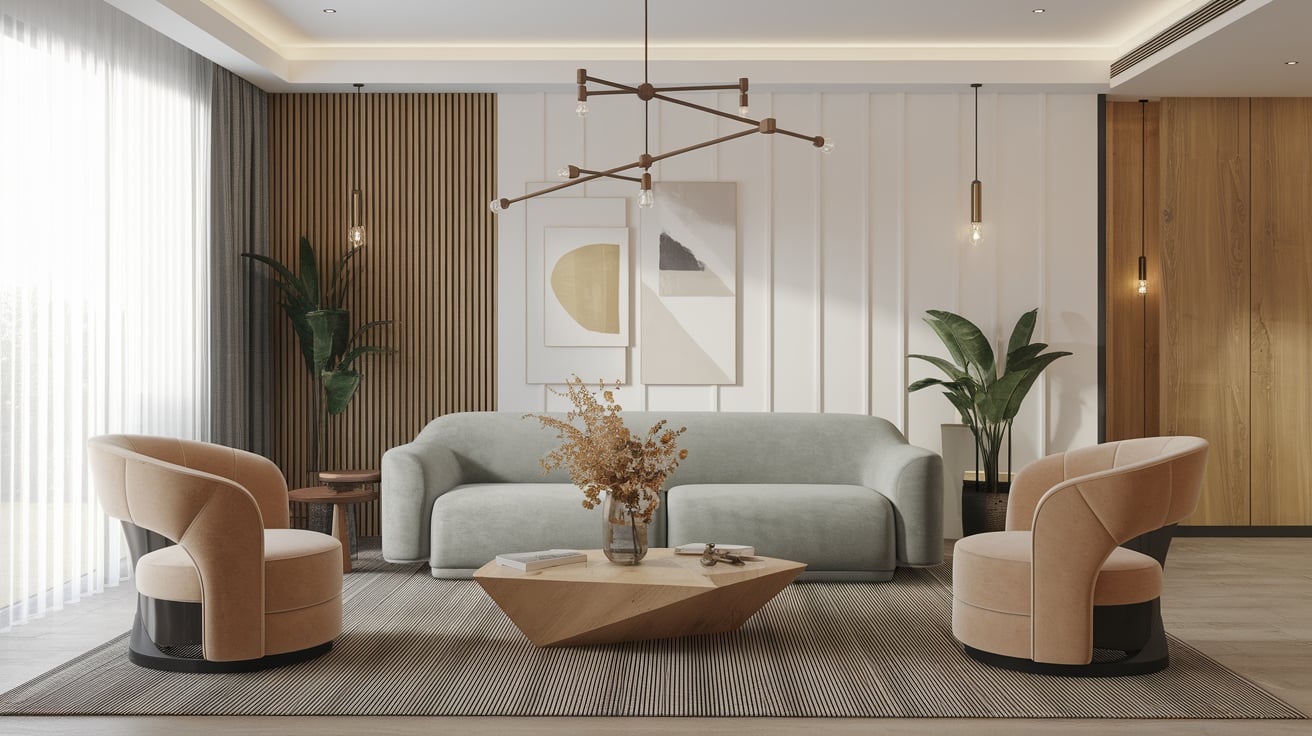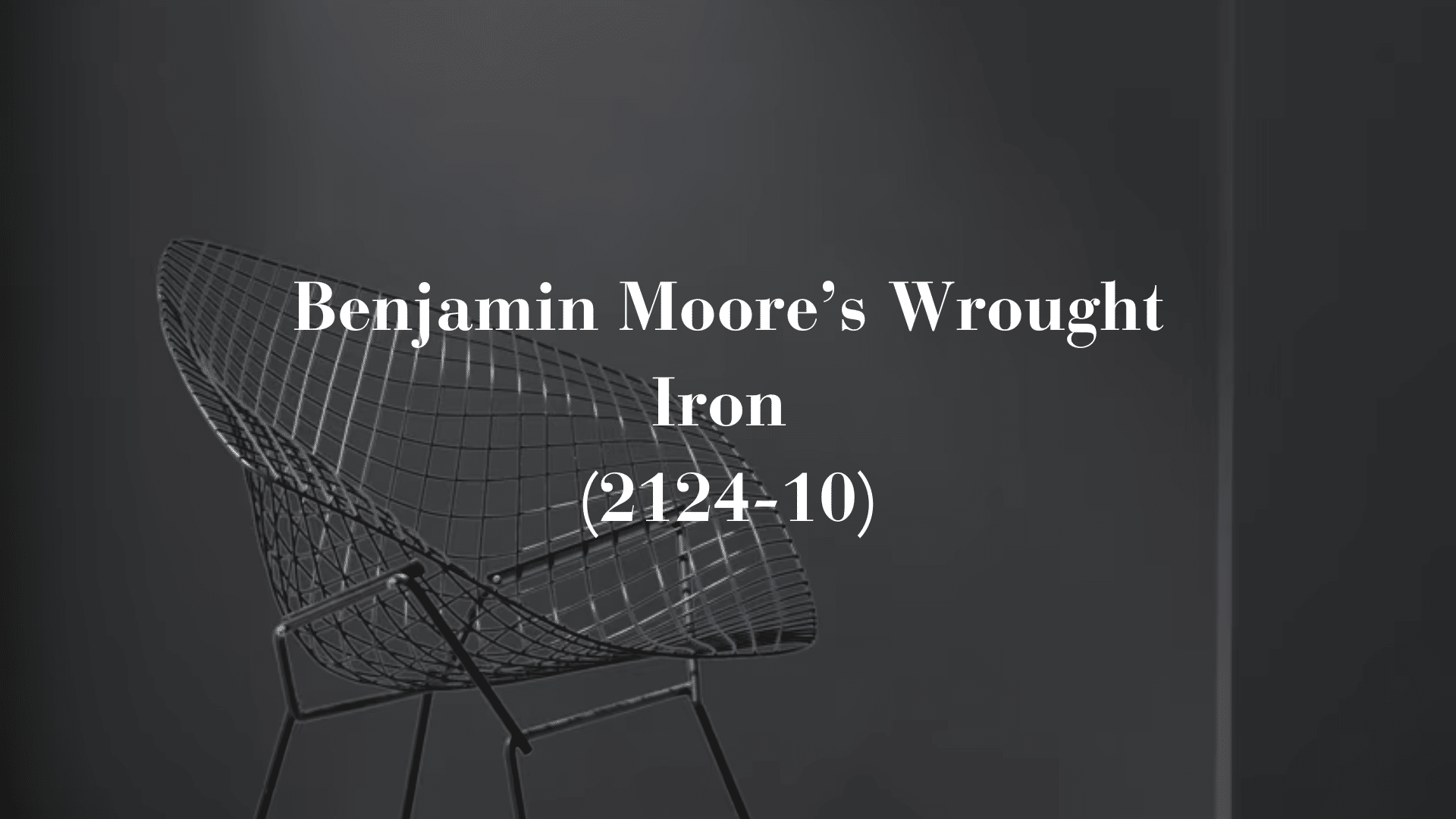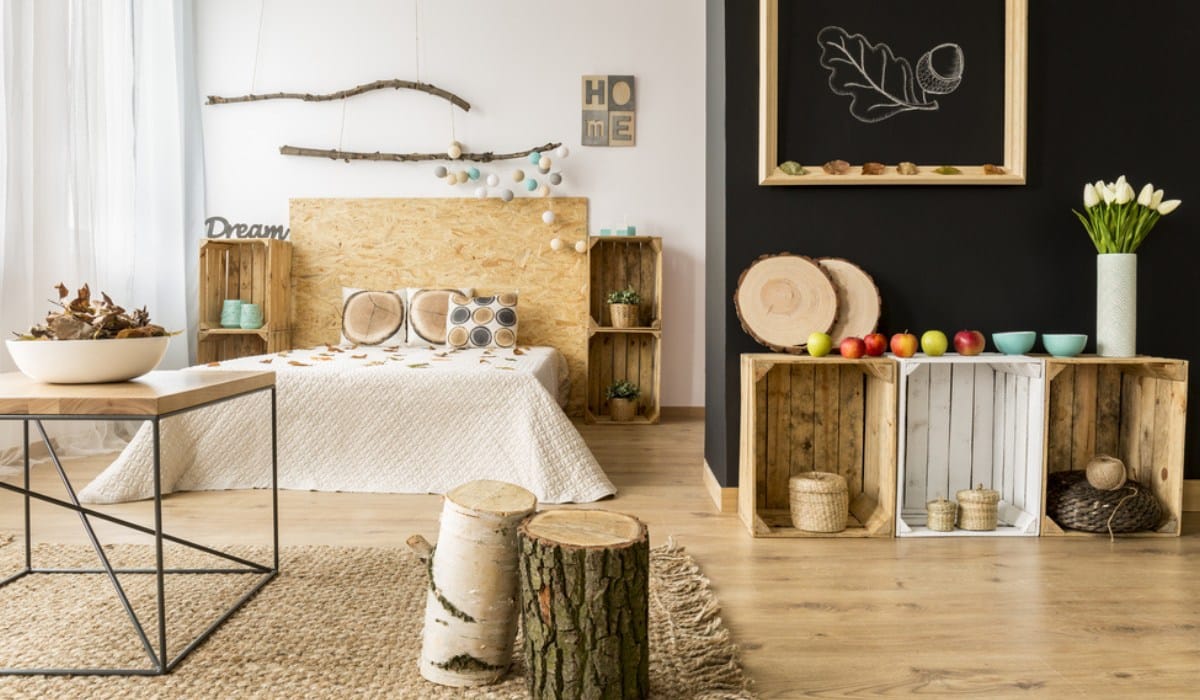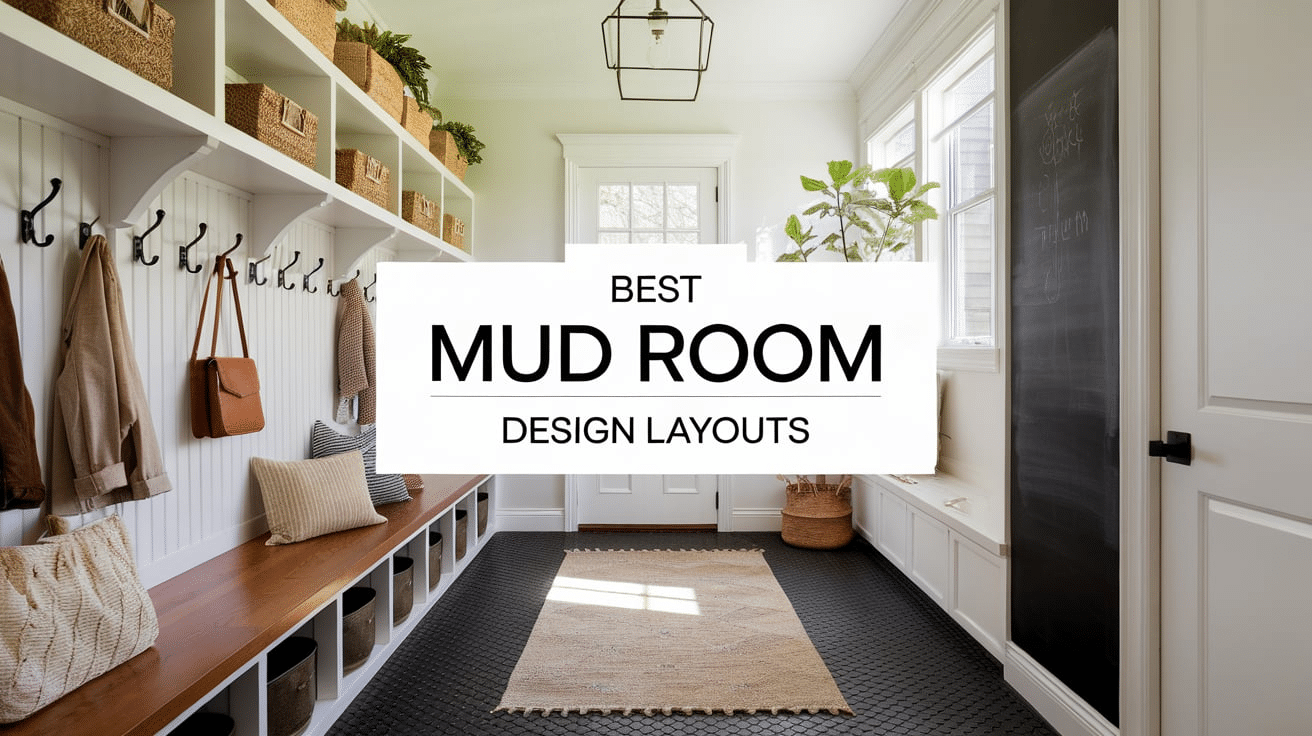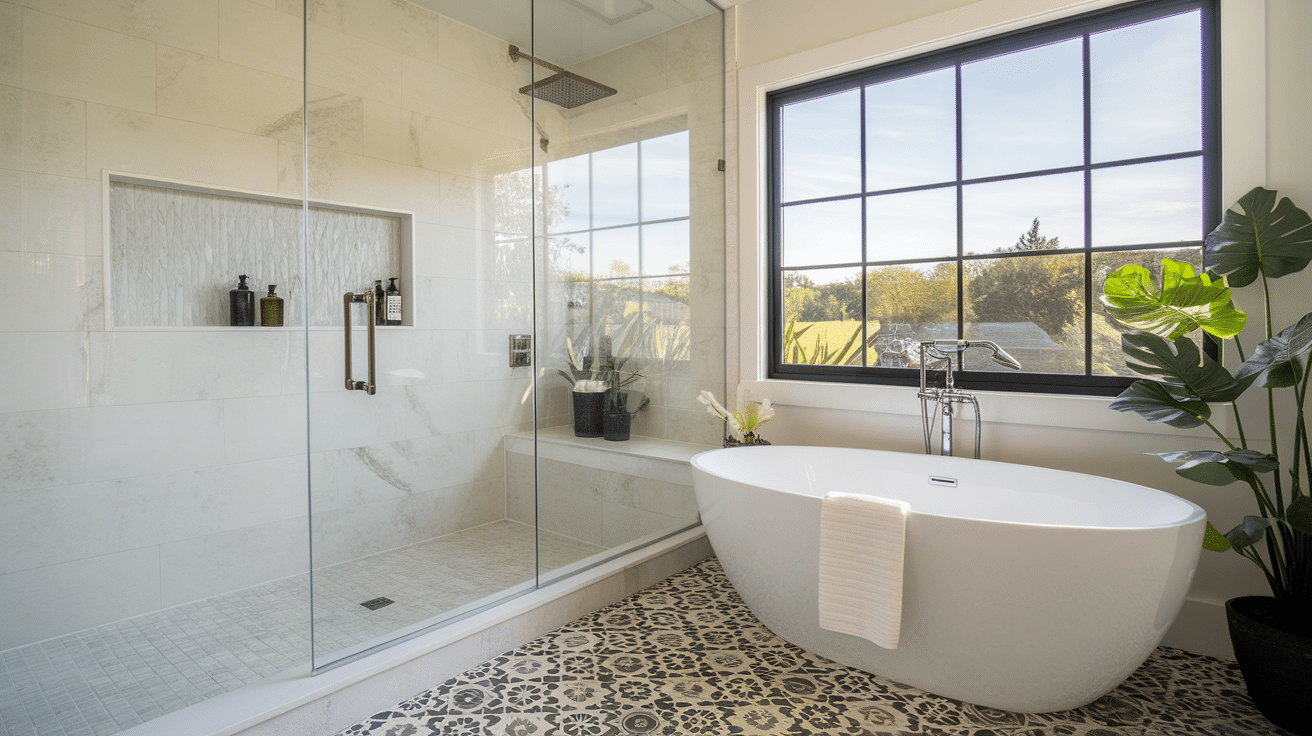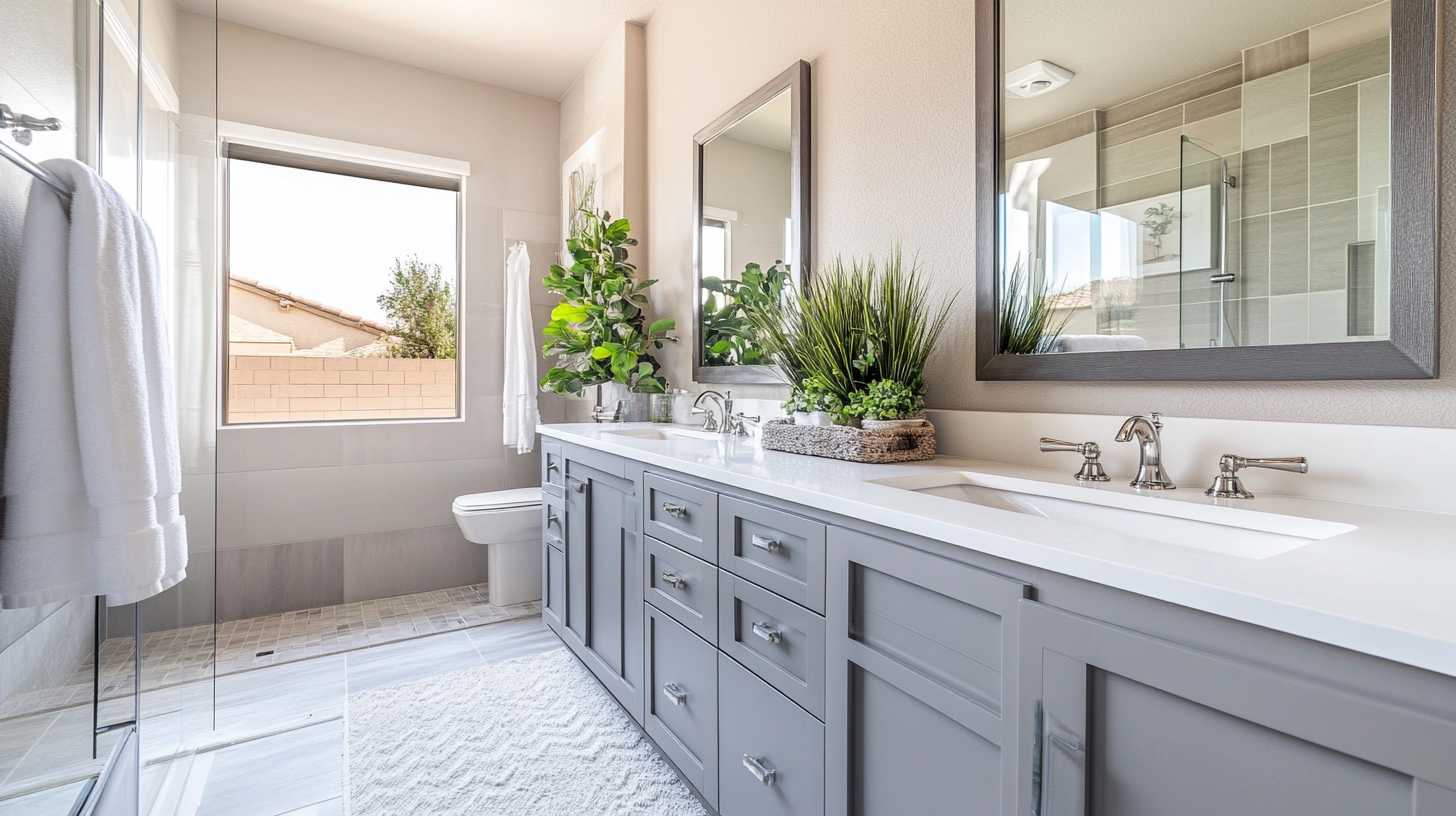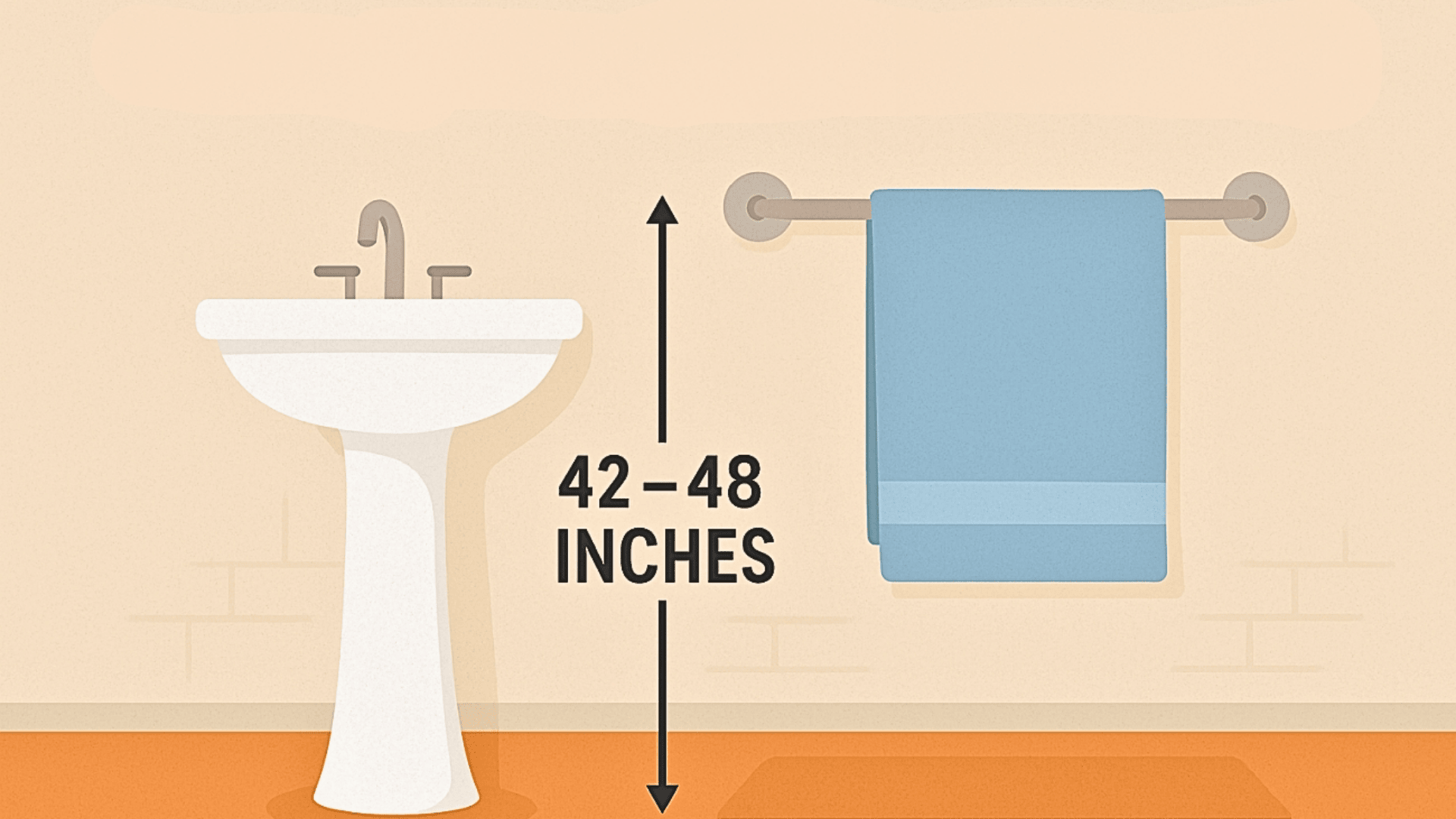Bring Realistic Form Interior Design to Your Home
Ever walked into a room and just felt right at home? Or stepped into a space that looked amazing in photos but felt awful to sit in?
The secret lies in something designers call realistic form interior design.
Form isn’t just fancy design talk. It’s about the real shapes of your sofa, table, and chairs working together to create spaces that feel good and function well.
In this guide, we’ll cover what realistic form really means, the key ideas that make it work, different types of forms, how to mix them for rooms that feel just right, and common challenges with real solutions that work.
Your home should make you happy. Let’s make that happen!
What is Realistic Form in Interior Design?
Form shapes how we feel in our spaces. It’s about the actual shapes and structures that make up your home or office.
When we discuss realistic form in interior design, we consider how real objects, with their natural shapes, create rooms that work well and look good.
Defining Realistic Form
Form simply means the shape, size, and structure of things in your room. Think of your couch, table, or bookshelf – each has its own form.
These forms come in three main types.
- Geometric- like square tables and rectangular shelves.
- Organic- like curved chairs that match your body.
- Abstract- unique shapes that catch the eye.
Good design mixes these forms to make rooms that feel right and work well for you.
The Importance of Realistic Form
Realistic forms make your space feel true and honest. When a chair looks like it can hold you and actually does, that builds trust.
These forms ground your space in reality and help it serve its purpose – whether that’s rest, work, or play.
Materials like wood, stone, and metal add to this real feeling. They bring nature’s touch indoors and connect us to the physical world, making spaces that feel solid and true.
Key Principles of Realistic Form in Interior Design
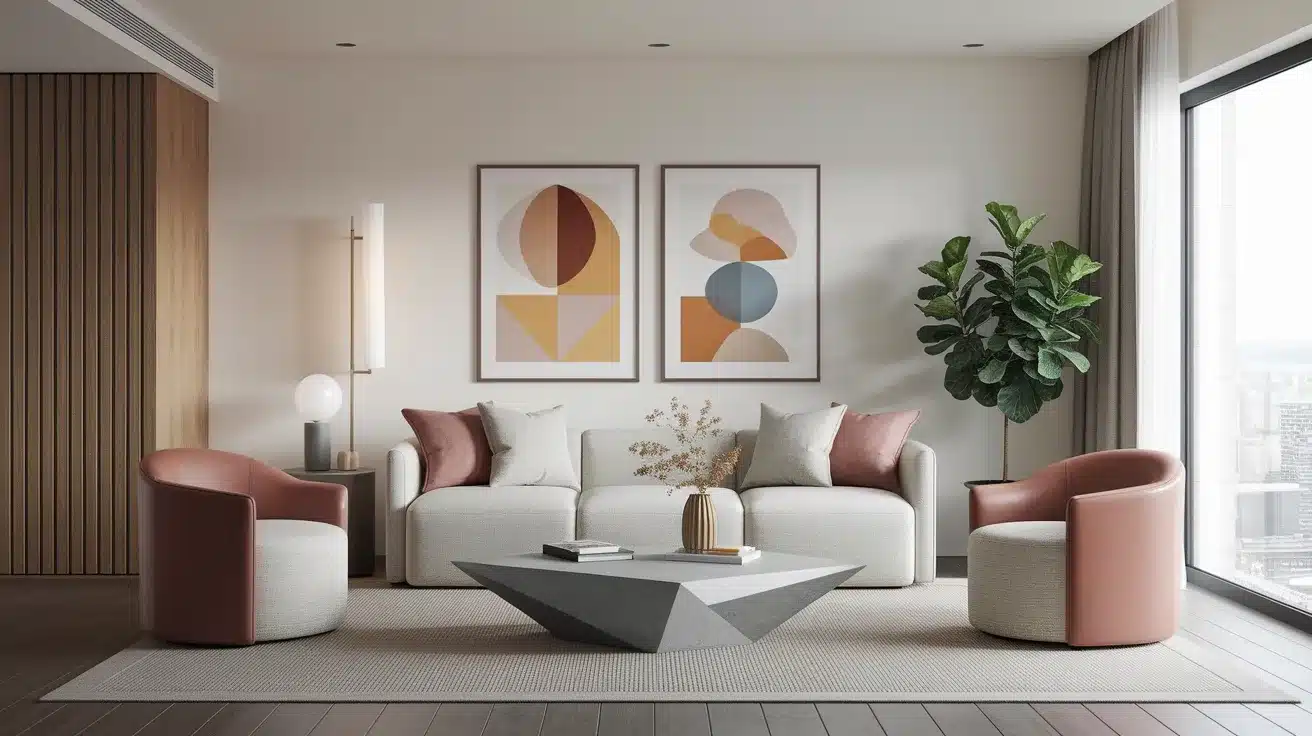
Getting the form right in your rooms isn’t rocket science.
These simple ideas will help you create spaces that feel good and work well for you. Let’s look at how shapes and spaces come together to make rooms you’ll love.
Balancing Geometric and Organic Forms
Mix straight-edged items (like square tables) with curved pieces (like round chairs) to make your room feel balanced. Your bookshelf can be boxy while your couch has soft edges.
This mix feels natural because it mirrors what we see in life, both order and flow existing together.
Leveraging Positive and Negative Space
Your stuff takes up space (positive space), but the empty areas (negative space) matter too. Think of it like music, both notes and pauses are needed.
Give your favorite chair room to breathe. When everything has some air around it, you’ll feel calmer in your space.
Scale and Proportion
Size matters in design. A tiny table next to a huge sofa looks odd.
Mix big and small items, but keep them in check with each other. Try a large couch with medium tables and small lamps to create a space that feels just right.
Creating Contrast with Forms
Pair different shapes to make rooms more interesting. Sharp-cornered tables with round vases. Straight-backed chairs with curvy lamps.
These opposites create energy in your room and catch the eye in a good way.
Incorporating Texture and Pattern
Add depth with how things feel and look. Smooth glass, rough wood, soft fabric, each brings its own mood.
Patterns on pillows or rugs can highlight the forms of your furniture. These touches make your space rich and full of life.
How to Achieve Realistic Form Interior Design in Your Home

Bringing realistic form into your home doesn’t need to be hard. These tips will help you create spaces that match how you live and what you love.
Selecting the Right Form for Your Room’s Function
Think about what you do in each room before picking furniture.
- Your bedroom needs soft, curvy pieces that help you relax, like a plush bed and rounded nightstands.
- For your home office, choose more straight-edged desks and shelves that keep you focused and organized.
When the shapes in your room match what you do there, you’ll feel more at ease and get more done.
Using Form to Define Zones
In open spaces, you can create “rooms within rooms” using the right shapes.
- A tall bookshelf can mark where your living area ends and dining begins.
- A low coffee table shows where your sitting area is.
- In small homes, look for furniture that pulls double duty – like ottomans with storage inside or tables that can expand when guests come.
The right forms can make even tiny spaces work harder for you.
Personalizing with Meaningful Decor
Your stuff should tell your story. Choose items with shapes that speak to you.
- Consider smooth, round vases that remind you of beach stones or angular photo frames that echo your modern taste.
- Mix practicality with pretty. That blanket should feel good and look better on your couch.
When your decor has forms that mean something to you, your home becomes more than just a space, and it becomes your space.
Types of Form in Interior Design
When you look around your room, every shape tells a story. From your straight-edged coffee table to your curvy sofa, these forms affect how you feel in your space.
Let’s check out the main types of forms that can make your home feel just right.
Geometric Forms
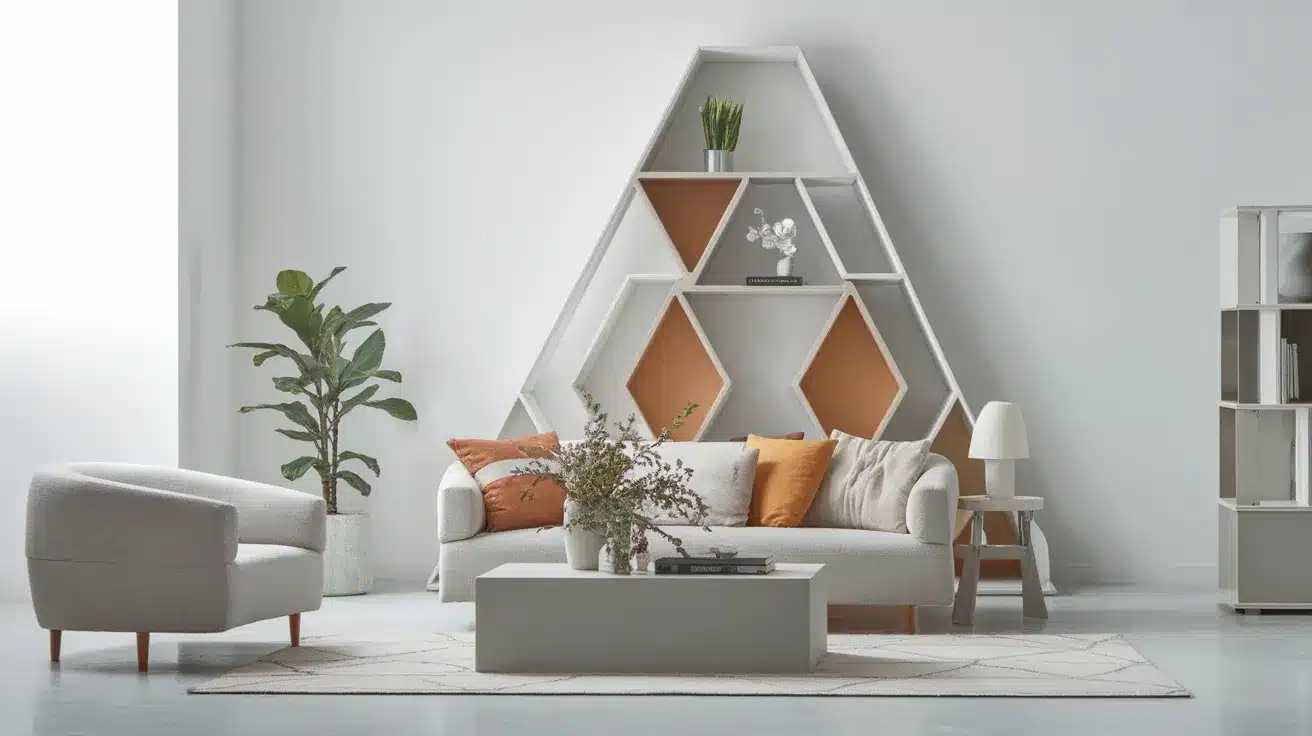
These are your squares, circles, and triangles – shapes with clear lines and angles. Your bookshelf with its perfect rectangle shelves? That’s geometric form at work.
These shapes bring a sense of order to your rooms. When you need a space that feels calm and organized, geometric forms help you get there.
They work great in home offices or kitchens where neatness counts.
Organic Forms
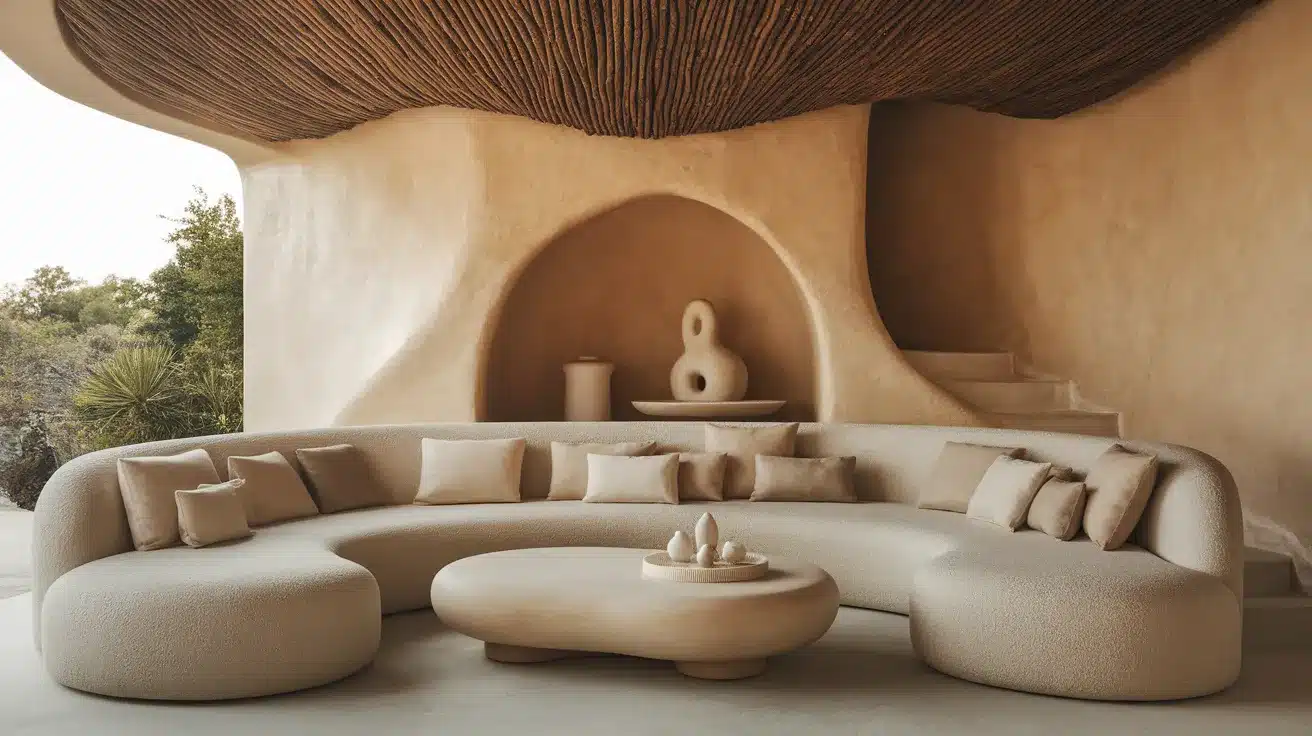
Think of the curves of a river or the shape of a leaf – that’s what organic forms bring indoors.
Your rounded armchair or wavy vase adds this natural touch. These soft, flowing shapes help you relax and feel connected to nature.
Add them to rooms where you unwind, like bedrooms or living rooms. They soften the mood and make spaces feel more welcoming.
Abstract Forms
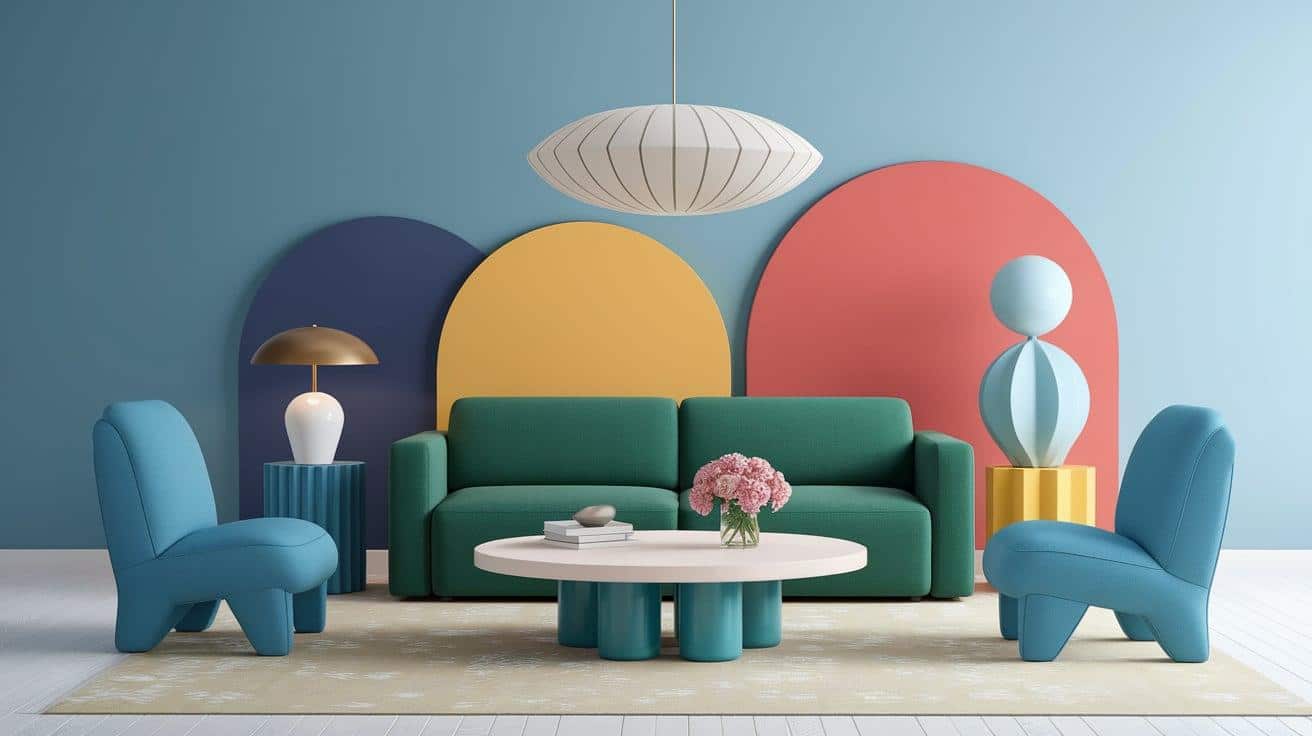
These are the “think outside the box” shapes that make you look twice. That oddly shaped lamp or unusual coffee table falls here.
Abstract forms let you express your personality and add fun to your space. They’re conversation starters and mood lifters.
When you want a room that feels unique and reflects who you really are, abstract forms help tell that story.
Realistic Form vs. Avant-Garde Design
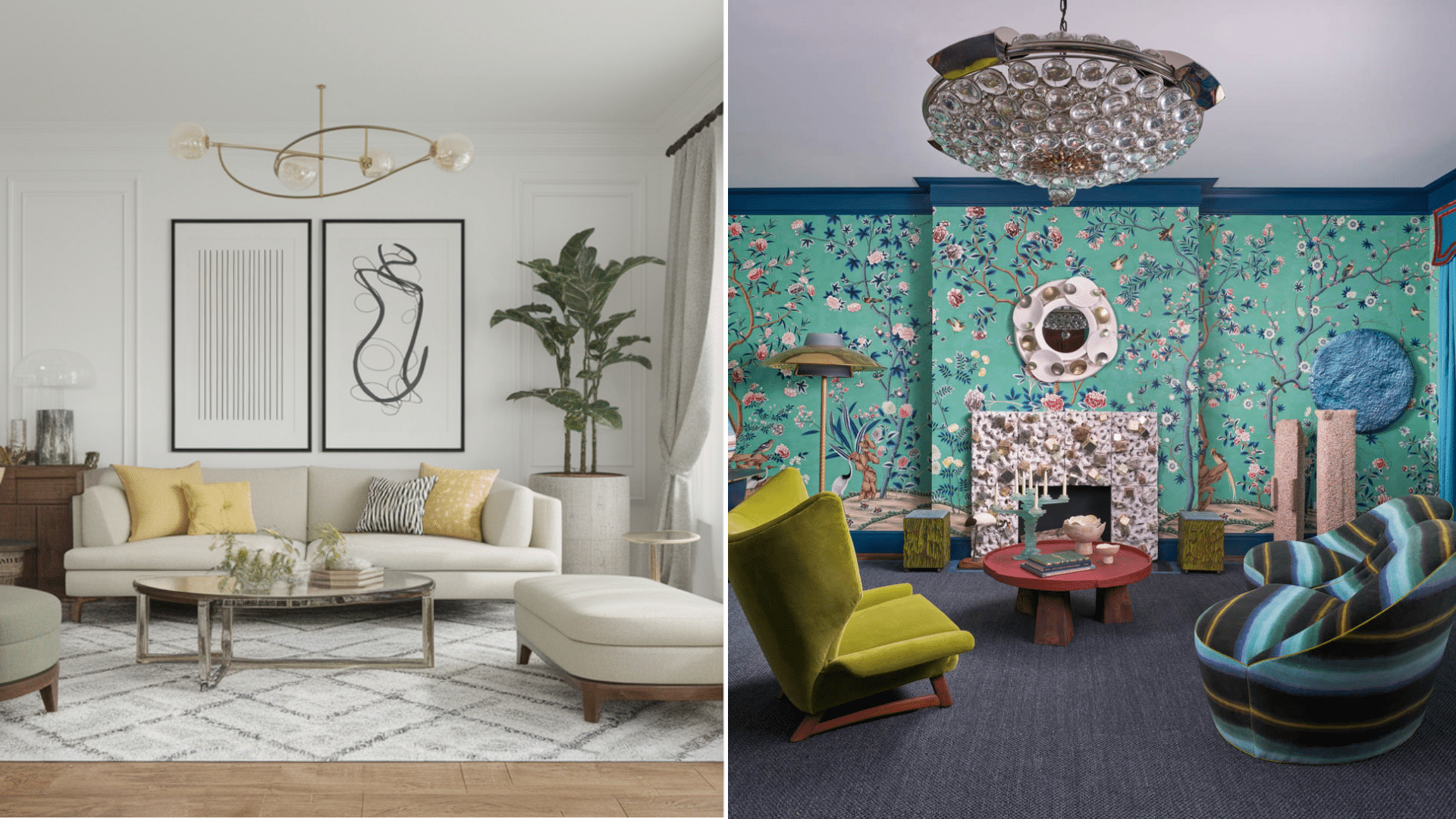
Some design styles look amazing in magazines but feel awful to live with. That’s the gap between realistic form and avant-garde design.
While an art-like chair shaped like a hand might win awards, it probably won’t comfort you after a long day.
Realistic forms put your needs first. They’re shapes that make sense for your body and daily life. That sofa you can actually nap on? That’s realistic form at work.
Avant-garde pieces often sacrifice comfort for looks. They might have sharp edges where you need curves or stand so tall you can’t reach them.
While they make great conversation starters, they can leave you sore and frustrated.
Your home should feel good, not just look good in photos. When you choose realistic forms, you’re picking a home that supports you rather than challenges you.
It’s the difference between admiring art and living comfortably within it.
Personalizing Your Realistic Form Design
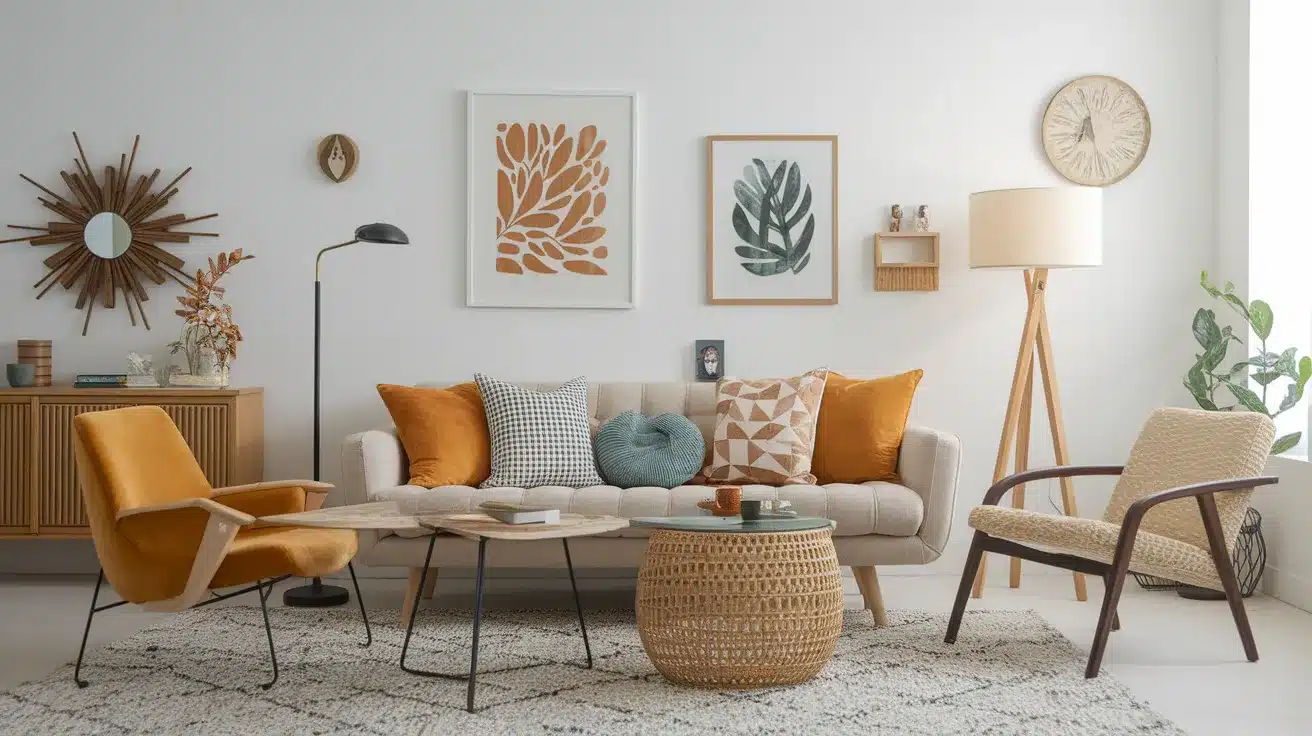
Making your space truly yours doesn’t mean giving up on good design.
Here’s how to add your personal touch while keeping things practical. These tips will help you create a home that feels like you without breaking the bank.
Mixing Styles
Don’t feel stuck with just one look! Mix that modern sofa with your grandma’s antique side table. Your guitar collection can sit next to clean-lined shelves.
The key is finding a common thread, maybe a color or material that ties things together. When you mix styles that matter to you, your space tells your unique story.
Budgeting Tips
Good form doesn’t need a big price tag.
- Start with one quality piece you love, then build around it.
- Look for basic shapes in thrift stores that you can refresh with paint.
- Natural materials often age well and last longer.
Remember that empty space costs nothing and actually makes your special items stand out more.
Common Challenges & Solutions
When setting up your home with good form, you might face some issues that everyone that has tried to incorporate realistic form interior design into their homes.
These problems can make you feel stuck or stressed about your home. The good news? These are normal issues that all of us face at some point.
1. Small rooms that make furniture placement tricky.
For small spaces, look for furniture that serves more than one purpose – like a bed with drawers or an ottoman that stores blankets. Think up, not out – use wall shelves and tall, narrow bookcases.
2. Tight budgets that limit your buying options.
When money is tight, buy quality pieces one at a time instead of cheap sets all at once. Check second-hand shops for solid wood items you can refresh with new paint or handles.
3. Too many items make the spaces feel crowded.
To avoid clutter, take the “one in, one out” approach: when something new comes home, something old leaves. And remember – empty space is your friend!
4. Working with odd room shapes or built-in features.
Odd room shapes? Use them. A corner nook becomes a reading spot. A low ceiling area works for a cozy seating setup.
5. Making rooms work for multiple uses or people.
For multi-use rooms, use rugs, screens, or furniture groupings to create zones. A desk facing away from a bed helps a bedroom double as an office.
Conclusion
Creating a home with a realistic form isn’t about following strict rules. It’s about making spaces that truly work for you. Your home should feel good to live in, not just look nice in photos.
The best spaces mix structure with comfort, order with personality.
Throughout this guide, we’ve seen how mixing different shapes, balancing empty and filled areas, and choosing the right sizes can transform your rooms.
Start small by applying one idea at a time. Maybe add some curved pillows to your angular sofa, or give your favorite reading chair some breathing room.
Your space should support you, not fight against you. That’s true realistic form interior design.

